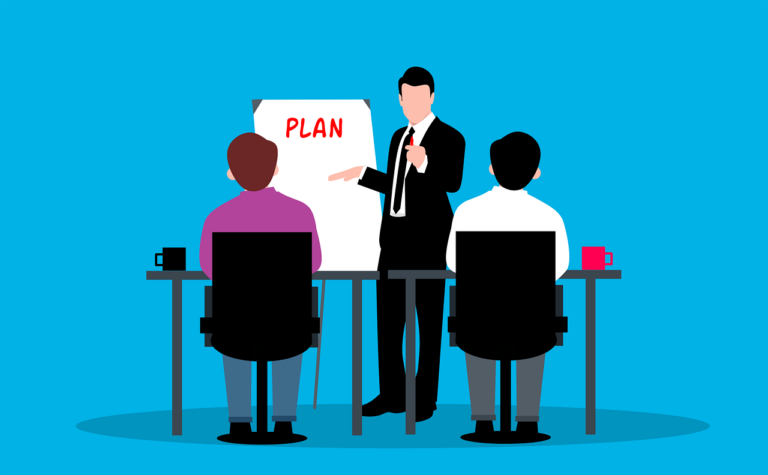How Does Employee Monitoring Software Work? A Technical Deep Dive

Have you found yourself wondering about the inner workings of employee monitoring software? As organizations increasingly rely on digital solutions to manage their workforce, understanding how employee monitoring software operates has become essential. This is also vital in order to maximize the benefits of employee monitoring software.
In the present scenario, 78% of employers use employee monitoring software to assess performance and online activities, while a remarkable 90% actively track work time versus non-work activities. These statistics highlight the rising importance of employee monitoring. They also emphasize its role in creating a productive and secure workplace.
This comprehensive article explores the intricacies of such systems. It sheds light on their technical mechanisms and data collection methods. It further discusses their vital role in promoting productivity, security, and compliance within modern workplaces.
Read on to gain insights into the functionalities and benefits of employee monitoring software.
Introduction to Employee Monitoring Software
Employee monitoring software is a suite of digital tools designed to track, record, and analyze various aspects of employee activities in the workplace.
It serves multiple purposes. These include productivity optimization, data security, and more. Such software operates across various devices and networks, providing organizations with a holistic view of employee behavior and work-related activities. Know more about 10 Tips for Choosing the Best Employee Productivity Tracking Software.
Manny Avramidis, the President and CEO of the American Management Association, has underscored the evolving landscape of employee monitoring.
His statement, “No matter how you feel about it, employers that don’t monitor will become fewer and fewer, not to nail employees, but because monitoring increasingly makes business sense,” places employee monitoring at the forefront of global business discussions.
It highlights the growing recognition that monitoring, when implemented thoughtfully, aligns with sound business practices. It also helps employees identify any weaknesses in their workflows and come up with strategies to strengthen them. It is not solely about policing employees or furthering the company’s bottom line alone.
This perspective resonates with the changing dynamics of the modern workplace. In such a workplace, efficiency, security, and compliance are paramount concerns.
Key Components of Employee Monitoring Software: How Does Employee Monitoring Software Work?
Now that you’re well-acquainted with what an employee monitoring software can achieve, let’s talk about its functioning. Understanding how employee monitoring software works involves examining its key components.
Installation and Deployment
The process begins with the installation and deployment of the software across the organization’s network and employee devices. The following can help achieve this:
- Agent-Based Installation: Installing monitoring agents on individual devices to collect data.
- Network Monitoring: Implementing monitoring solutions at the network level to capture traffic data.
- Cloud-Based Solutions: Utilizing cloud-based platforms for ease of deployment and scalability.
Data Collection Engines
So, once deployed, how does employee monitoring software work? At the core of employee monitoring software are data collection engines responsible for gathering information from various sources. These engines use a variety of techniques to collect data, including:
- Keystroke Logging: Tracking and recording keystrokes made by employees, providing insights into their digital activities.
- Screen Capture: Periodically taking screenshots of an employee’s computer screen to visualize their work and identify potential distractions.
- Network Traffic Analysis: Monitoring data packets flowing through the network to identify applications and websites accessed.
- Email and Communication Tracking: Scanning emails and instant messaging platforms for policy violations and security risks.
- File and Document Tracking: Monitoring file access, transfers, and changes to identify data breaches or unauthorized access.
In many cases, administrators can also access a real-time dashboard to monitor employee activities as they occur. This allows for immediate intervention in case of security threats or policy violations.
Data Storage and Analysis
The collected data is securely stored within the organization’s network or on cloud-based servers. It is present in secure storage using encryption measures to protect sensitive information. Access to this data is typically restricted to authorized personnel, ensuring data privacy and compliance with legal regulations.
Advanced algorithms and data analytics tools are then employed to analyze this data. Data analysis engines process the collected information to generate actionable insights. These insights can range from identifying productivity trends to flagging security breaches or policy violations. Reports are available for administrators and managers to review and act upon.
These analyses can include:
- Productivity Metrics: Measuring employee activity levels, such as time spent on productive tasks versus non-productive ones.
- Security Alerts: Detecting suspicious activities, unauthorized access, or data breaches, triggering alerts for immediate action.
- Compliance Reporting: Generating reports to ensure that employees adhere to company policies and industry regulations.
User Interface
Employee monitoring software typically provides a user-friendly interface for administrators and managers to access data, configure monitoring settings, and view reports. This interface allows them to monitor employee activities in real-time and make informed decisions, thereby optimizing benefits of employee monitoring software.
Privacy Controls
To address privacy concerns, employee monitoring software often includes privacy controls and settings. These controls allow organizations to define monitoring boundaries, such as excluding specific applications or websites from tracking, and ensuring that private information is not recorded or accessed.
Compliance and Legal Considerations
Employee monitoring software also assists organizations in maintaining compliance with legal regulations. These could be GDPR, HIPAA, or industry-specific and region/country-specific requirements. It helps organizations adhere to these regulations by providing audit trails and reports that document compliance efforts.
To Sum Up
Employee monitoring software is a powerful tool that enables organizations to optimize productivity, enhance security, and maintain compliance. The benefits of employee monitoring software rely on data collection engines, data storage and analysis, user interfaces, privacy controls, and compliance measures.
Through understanding how employee monitoring software works at a technical level, organizations can harness its capabilities effectively while respecting privacy and legal considerations. As the workplace continues to evolve, employee monitoring software remains a crucial component for organizations striving for productivity, security, and compliance in the digital age. Platforms like ProHance remote team management software seamlessly integrate into employee monitoring software, offering intuitive analytics and compliance controls. In an era of remote work, ProHance empowers data-driven decisions and streamlined workflows.




